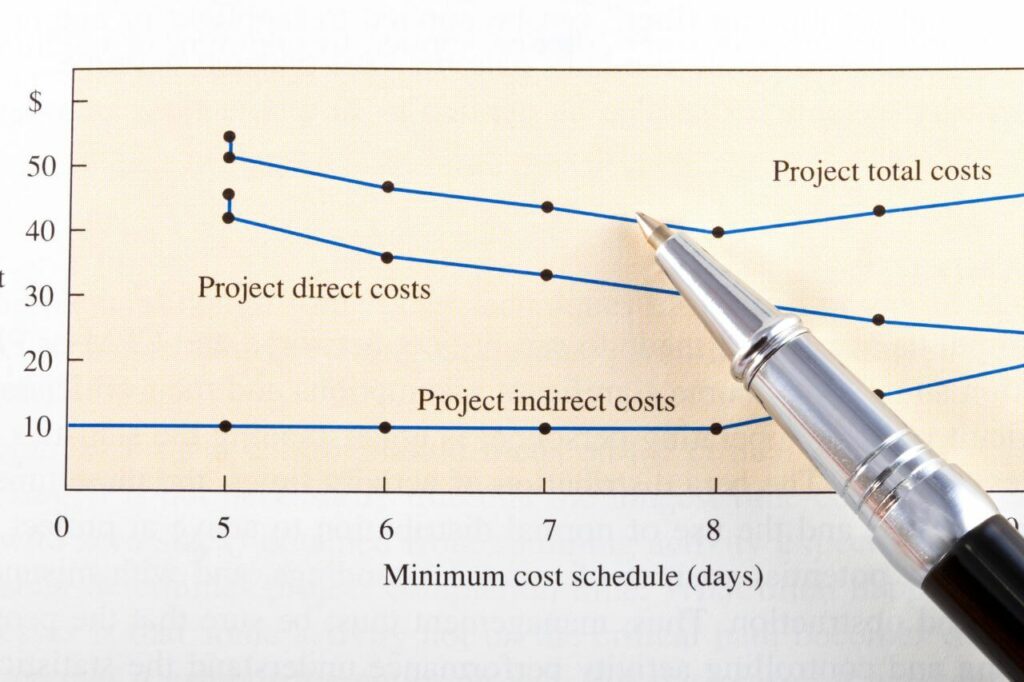Have you ever been managing a project and already envisaging the product or service you intend to deliver only to be told that the project has to be canceled due to a lack of funds?
If you haven’t and think that it’s impossible, well, never say never. Projects can be very complex to manage and it’s not uncommon for the allocated budget to run out leaving the project in limbo.
No matter the funds allocated as the budget for a project at the start, if it’s not properly managed, there’s a myriad of problems waiting down the line. A key component of managing your project successfully is having a clear and accurate cost baseline.
This blog post discusses the concept of cost baseline in project management, and its importance and use. It also provides tips and best practices for creating and maintaining a cost baseline to help ensure the success of your projects.
Cost Baseline Definition: What is a Cost Baseline in Project Management?
A cost baseline in project management, or cost performance baseline is an important tool for tracking and monitoring project costs.
It’s a key element of project cost management, as it allows you as a project manager to compare your actual project costs against projected costs.
The cost baseline is derived from the project budget, which is based on aggregated cost estimates for activities and resources needed to complete the project.
It provides a framework for controlling the project’s costs, by identifying acceptable spending levels.
The cost baseline is used to monitor project expenditures and track project performance with respect to cost.
Typically, the cost baseline comprises of an estimate of the project’s total cost, a budget of the resources required to complete the project, and a timeline for allocating the costs.
It can also include some additional information such as allowances for contingencies and/or inflation, and an assessment of how changes in project scope and schedule might affect the final cost.
The cost baseline is a critical component of an effective project cost management process, as it facilitates sound decision-making and controls the cost of a project.
Without the cost baseline, the project team would be unable to monitor or control project costs effectively and ensure that budget burdens are appropriately allocated.

What is Included in the Cost Baseline?
The project cost baseline is made up of the total planned costs for the entire life cycle of the project.
This includes not just the direct costs such as materials, labor, and services, but also indirect costs like overhead, fees, and taxes.
The project cost baseline helps establish the initial budget for the project, as well as provide a benchmark for tracking and measuring project spending.
The baseline also provides a standard for comparison that makes it easier to audit and evaluate project performance.
The cost baseline is established early on in the project and monitored throughout its duration.
It should include estimates for all the costs associated with completing the project, including personnel and training, materials, travel expenses, and other items.
It’s important to accurately project costs to prevent the project from going over budget or taking longer than originally planned.

What is the Purpose of Cost Baseline in Project Management?
A cost baseline is the cornerstone of any project and provides a benchmark or metric for determining a project’s progress and success.
It’s essentially a plan for the overall cost of a project and helps to track and manage the costs of the project from its inception to completion.
The cost baseline consists of a forecast of all expected costs in order to achieve the project’s goals and objectives.
It’s important to establish a cost baseline, as it provides the overarching framework for successful project management and cost control.
The baseline provides the data which will inform the answers to important questions, such as “Is the project cost estimated too low? Is it within budget or over budget? What percentage of the budget has already been spent?”
The cost baseline enables you as a project manager to identify, manage and control project cost variances throughout the duration of a project.
Also, it provides essential information to the organization such as how much money they must allot for the project, and helps to predict potential cost overruns.
The cost baseline should be established at the very beginning of the planning phase of a project and can be updated on a regular basis throughout the duration of the project.
This ensures that the baseline is updated with the most current information available. This way, you can have a good understanding of the project’s cost in relation to its progress.

How is Cost Baseline Created?
The cost baseline is created by estimating the costs associated with each element of the project and is usually illustrated in an S-curve.
This includes direct project costs, like materials and services, as well as indirect costs, such as overhead and administrative costs.
Once cost estimates are determined, you can create a cost baseline by adjusting these estimates for risks, inflation, and contingency plans.
This yields an accurate estimate of the cost of completion for the project.

Cost Baseline vs Project Budget
A cost baseline is a fixed set of approved costs established at the end of the planning phase that are based on the approved project scope and used to measure, monitor and control the project’s cost performance.
The cost baseline consists of the project’s budget at completion, the value of any authorized changes to the project, and any applicable contingency reserves.
In contrast, a project budget is a high-level estimate of all costs associated with a project. The project budget is a tool for controlling finances, while the cost baseline is a tool for measuring and tracking project performance.
It’s typically set at the beginning of the planning phase and includes all costs associated with the project plan, such as labor, materials, and overhead.
A project budget is generally viewed as a living document that’s updated throughout the project life cycle to reflect any changes in the project scope or timeline.
While the cost baseline and budget typically agree at the beginning of the project, they can deviate over time as project changes occur, making it important to continually monitor and reconcile them.

Can the Cost Baseline be Changed?
Yes, a cost baseline can be changed, but this change should not be taken lightly.
The cost baseline is the total amount of money that is allocated for an entire project, and the accuracy of this baseline will affect how the project is executed.
Changes to cost baselines should be carried out thoughtfully and with careful consideration of the project’s needs.
All budget-related changes must be accurately documented and agreed upon by stakeholders. A decision to adjust the original cost baseline must be made with the same rigor and care as the original cost baseline development.
Before implementing any changes, it’s crucial to identify the potential impacts on the schedule, scope, and quality of the project, as well as potential risks.
By evaluating the potential impacts, stakeholders can take a realistic approach when making a decision about changing the cost baseline. Teams should also consider any actions that may need to be taken if changes are made.
Additionally, any changes to the cost baseline should be regularly monitored, and stakeholders should be alerted to both positive and negative variances.
When there is a discrepancy, it’s important to be proactive in identifying and addressing any issue at the root of the variance in order to avoid any unnecessary cost overruns.

What are the Three Project Baselines?
For any project, there are three baselines that make up the project performance measurement baseline (PMB) which is the foundation for measuring the success of any project. They’re the scope, cost, and schedule baselines.
The scope baseline outlines the scope, deliverables, quality standards, and all the components of a project to ensure that the goals of the project are achieved. It outlines the acceptance criteria of the project and sets the realm of the work covered in the entire project.
The cost baseline determines the budget allocated to the project and the cost of resources including labor, materials, and other resources needed for the project. It helps to map out the costs of a project in order to monitor project performance.
The schedule baseline is a timeline for a project’s completion. It outlines milestones and deliverables for the project to keep it organized and moving forward. Additionally, it will help to determine whether the project is ahead of or behind schedule.

Tips for Maintaining a Cost Baseline
A cost baseline is a reference point or a prediction of all the costs that you can expect over the duration of the project.
Here are some tips on how to maintain your cost baseline and ensure that your project stays on track and within budget:
1. Gather the Details
Before you start, make sure to collect all of the project data, including labor costs, material costs, equipment costs, and more.
This will provide a comprehensive view of your resources and will be useful for creating an accurate cost baseline.
2. Use a Budgeting Tool
A budgeting tool can help you track and compare costs so that you can stay on top of your project and make sure that it’s on budget.
With a budgeting tool, you can also quickly update costs, which can help you identify potential issues and risks early on.
3. Monitor Changes
As your project moves forward, things may change, and those changes can impact your cost baseline.
To ensure that the cost baseline remains up-to-date and accurate, you should keep track of any changes and adjust your baseline accordingly.
4. Track Progress and Costs
As your project progresses, it’s important to track both the progress and the costs, as they’re both essential to a successful project.
Tracking progress and costs also helps you determine if the project is staying within budget, and identify any areas where cost savings can be made.
5. Review and Adjust
As your cost baseline changes, you should regularly review it and adjust it according to the current budget and resources. This can help you stay on track and ensure that your project stays within budget.
Conclusion
Project cost is one of the triple project constraints known as the iron triangle. You have to manage it properly for your project to be successful.
With proper use of the project cost baseline, you have a vital tool that can help you measure, monitor, and control your project costs to prevent overspending.
FAQs
Who is Responsible for Creating and Maintaining the Cost Baseline?
The project manager is responsible for creating and maintaining the cost baseline, with input from other members of the project team.
How is the Cost Baseline aligned with the Project Schedule?
The cost baseline should be broken down by different levels of granularity (WBS elements) and it should be aligned with the project schedule. This way you can track the progress of the project and compare it with the planned costs
How is the Cost Baseline used to Track the Project’s Progress?
The cost baseline is used to track the project’s progress by comparing actual costs to the planned costs. If the project is over budget, you should adjust the cost baseline accordingly.





